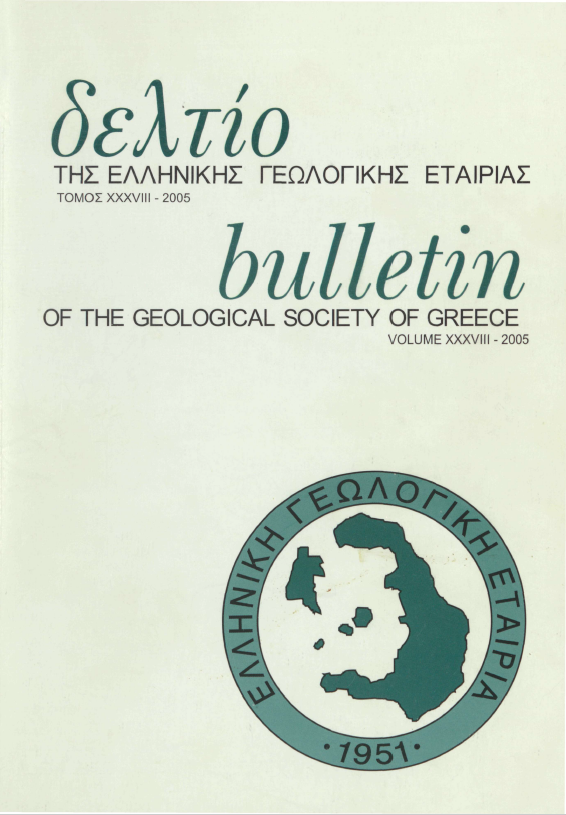Geomorphological, hydrographical and sedimentological processes at the Serres basin due to quaternary fault tectonics
Résumé
On the S W foothills of Mt. Menikion and the NE part of Serres basin, four zones of composite alluvial fans have been formed. The upper zone of thick hard fanglomerates lies at altitudes of 280 to 600 m on Mt. Menikion schists and marbles. The high zone of loose fanglomerates, with red-brown sand matrix, lies at altitudes of 200 to 350 m on the neogene deposits. The intermediate zone of mixed coarse and fine elastics lies at altitudes of 80 to 140 m on neogene deposits. The lower zone of gravel, sand and silt deposits lies at altitudes of 10 to 60 m on quaternary terrace deposits. Each zone is approximately 13 - 17 km long and 1-2 km wide, with E/SE - W/NW trend, almost parallel to the main fault lines of the area. The fan zones were deposited along the slopes of Mt. Menikion and Serres basin, owing to the fault tectonics of the area. Several E/SE - W/NW trending parallel to each other listric faults, were formed on the basement on Mt. Menikion and the neogene deposits of Serres basin. Their blocks slided and turned downstream along the faults, so that their surface inclined backwards. Close to the faults, parallel valleys were formed. They filled up with quaternary deposits, brought down by activated torrents. The torrents flowed transversely to the fault blocks. At the inner parts of the blocks they deposited clastic material in the form of alluvial fans. In the outer – higher part of the blocks they were incised in the rocks or the neogene sediments, to form narrow valleys, with terraces along their walls. The staircase development of the relief finally resulted in a staircase development of the fan zones. The two zones, upper and high, seem to be Pleistocene in age and the torrents have already incised in the fan material. The two zones, intermediate and lower, seem to be Holocene in age and are still active. Tectonic activity seems to have been the main cause of sediment entrapment in the Serres basin and the low sediment delivery rate of the river Strymon during the Quaternary.
Article Details
- Comment citer
-
ΨΙΛΟΒΙΚΟΣ Α., ΒΑΒΛΙΑΚΗΣ Ε., ΒΟΥΒΑΛΙΔΗΣ Κ., & ΠΑΠΑΦΙΛΙΠΠΟΥ-ΠΕΝΝΟΥ Ε. (2001). Geomorphological, hydrographical and sedimentological processes at the Serres basin due to quaternary fault tectonics. Bulletin of the Geological Society of Greece, 34(1), 451–457. https://doi.org/10.12681/bgsg.17335
- Rubrique
- Neotectonics and Geomorphology

Ce travail est disponible sous licence Creative Commons Attribution - Pas d’Utilisation Commerciale 4.0 International.
Authors who publish with this journal agree to the following terms:
Authors retain copyright and grant the journal right of first publication with the work simultaneously licensed under a Creative Commons Attribution Non-Commercial License that allows others to share the work with an acknowledgement of the work's authorship and initial publication in this journal.
Authors are able to enter into separate, additional contractual arrangements for the non-exclusive distribution of the journal's published version of the work (e.g. post it to an institutional repository or publish it in a book), with an acknowledgement of its initial publication in this journal. Authors are permitted and encouraged to post their work online (preferably in institutional repositories or on their website) prior to and during the submission process, as it can lead to productive exchanges, as well as earlier and greater citation of published work.






